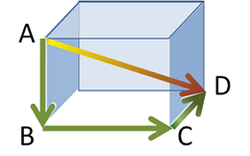Ubiquitous Hypotenuses

Below is a list of the first few numbers where can be written as the sum of two positive square numbers in at least two different ways:
, , , , , , ...
All of the numbers mentioned are divisible by 5. Unfortunately, this property doesn't hold for all numbers in this list. What is the first number in this list that isn't divisible by 5?
Image Credit: Wikimedia Brews ohare .
The answer is 169.
This section requires Javascript.
You are seeing this because something didn't load right. We suggest you, (a) try
refreshing the page, (b) enabling javascript if it is disabled on your browser and,
finally, (c)
loading the
non-javascript version of this page
. We're sorry about the hassle.
You should specify that the numbers can be written as the sum of two positive square numbers.
For this problem I refered to the handy parametrization of pythagorean triples: x = ( 2 a b ) k , y = ( a 2 − b 2 ) k , z = ( a 2 + b 2 ) k with ( a , b ) = 1 , k integer.
In this case, a = b due to the positive restriction. Now, we want to fix z , and for it to satisfy the condition, two or more of its factors have to be able to be written as a sum of two distinct non-zero squares. We can easily list the first few possible factors:
5 , 1 0 , 1 3 , 1 7 , 2 5 , 2 6 . . .
Product of two or more of these numbers will give a satisfactory z (unless one of the numbers already satisfy the condition, in that case you only need one number. e.g. 2 5 can stand on its own), the next smallest product not divisible by 5 is hence 1 3 2 = 1 6 9